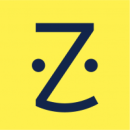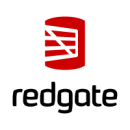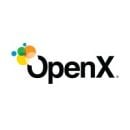Making the perfect soufflé is notoriously difficult. Without the perfect environment, the baker’s efforts crumble into a cascade of problems.
If the eggs are overwhipped, the whites won’t be able to keep expanding in the heat of the oven. If the oven is too hot, the soufflé will rise higher, but it will fall faster once it’s taken out of the oven all because too much moisture was released. Some bakers swear by using a copper mixing bowl in order to get trace amounts of copper ions to combine with the egg white proteins, making the foam more stable.
Creating the ideal environment to keep employees engaged in their work is the HR professional’s soufflé.
Many HR teams spend countless hours trying to make their workplaces more engaging. They experiment to find what office perks are most helpful. They research different commuting benefits to help employees get to work easier. They adjust and revise professional development plans to keep employees connected and caring about their work.
It turns out that where that work takes place requires a careful balance, as well.
Of course each job requires different levels of communication versus heads-down work, but for many roles a hybrid approach can maximize employee engagement. Gallup data from 2023 notes that the sweet spot tends to be between two and three days a week in the office to keep employees engaged.
Built In spoke with leaders from eight New York City tech organizations who found the perfect recipe for hybrid work.

MSD is a global biopharmaceutical company that works to prevent and treat diseases that threaten people and animals — including cancer, infectious diseases such as HIV and Ebola, and emerging animal diseases.
What does a hybrid work model mean at MSD?
The hybrid work model is one of the tools through which the company allows us to bring flexibility to our work, combining in-person spaces to strengthen teams, create collaborative environments and enable spontaneous conversations — all of which in-person interactions facilitate. At the same time, it allows us to enjoy the benefits of remote work.
In my case, this model means not only a work-life balance that aligns well with my expectations and personality but, most importantly, it allows me to fully embrace the only opportunity I have to be the father of Ignacio (my toddler). Having interruptions from him to share a treasure he found on the way home, or to sell me a sheep that is a bit crazy and his guardian dog or simply because he wants to feel close to me are also the most effective and loving active pauses.
What is your favorite aspect of the hybrid work model?
My favorite aspect of the hybrid model is that I can be present with my children (Emily, 2 years old, and Gael, 4 years old), assisting them in taking them to their respective schools. I can also manage my time as I wish. For example, I can work out at the gym either in the morning or in the afternoon, depending on how my workload is.
Additionally, thanks to the hybrid work model, I have been able to take care of my children when they have been sick and cannot attend their schools. Also, the office visits become more meaningful.
“Thanks to the hybrid work model, I have been able to take care of my children when they have been sick and cannot attend their schools.”
What impact does this model have on employees at MSD?
I consider that the efficiency and motivation of workers are enhanced and maximized. And I think that the impact is giant: we are just starting to see how it influences particularly the well-being and health of workers. It is a win-win for the company and the employee. Today, I feel like a present mom while still being able to continue developing professionally, a perfect balance for me.

NextRoll is a marketing technology company with two business units, including RollWorks, an account-based platform for business-to-business marketing and sales teams, and AdRoll, an e-commerce marketing platform.
Describe NextRoll’s approach to hybrid work.
NextRoll is committed to building a culture where people can do their best work. NextRoll operates in a hybrid model where Rollers can work remotely or from a WeWork space in the geographies where we have an in-person presence: San Francisco, New York, Dublin and Sydney. As a hybrid employee based in New York City, NextRoll gives me the ability to meet within an office setting for team bonding, social interaction, learning and meetings, but I can also choose to work from home on a given day if that is what is best for me to complete work and maintain a work-life balance.
My team is based in the same geographic area so we work from the same WeWork space at least one day each week, and we are able to decide together which day of the week works best for our team. This gives me flexibility in how I manage my calendar. Across the company we have employees who are fully remote, some who go into a WeWork space multiple days a week and others who only go in one or two days.
Why does this schedule work well for you?
A hybrid schedule works because it allows us more time for family, partners, pets, house maintenance, personal/mental health maintenance, productivity, quiet meeting spaces and more. Personally, I am more productive at home than I am at the office.
However, by going into the office and interacting with my colleagues, I am able to learn what they are finding successful or challenging, gain a broader understanding of what is happening in the company as a whole and reflect on how I can do better at my job.
“Personally, I am more productive at home than I am at the office. However, by going into the office and interacting with my colleagues, I am able to learn what they are finding successful or challenging and gain a broader understanding of what is happening in the company.”
So, both are extremely important for me to perform my best. As a social person, connecting with my coworkers in person re-energizes me to continue pushing myself. Knowing I am going into the office because it is my choice makes me even more excited to show up and be engaged.
What makes a hybrid work model a successful choice in your opinion?
For me, what makes this successful is the level of support we get for where we choose to work. My manager and team supported my temporary geographic absence from New York so that I could visit family and travel for a few months. Being able to take that much-needed time without fear of judgment or needing to take all my PTO motivates me to work harder and makes me happier to be a part of this company.
When I got back home to New York, I was excited to go into the office and get involved in the local company culture and team events. For those who frequently work from the office, we have happy hours, events, lunch and learns, and more to further build our relationships. My manager goes out of her way to find activities for all of us in New York to get together. For employees who are fully remote, we also have virtual activities, like cooking and art classes, as a way to feel more a part of the culture. This gives us the autonomy to be as involved as we want, wherever we are located.
Zocdoc is a healthtech company that created a healthcare marketplace to find and book in-person or virtual care.
Describe what a hybrid work model means at Zocdoc.
For the majority of Zocdoc roles, in-office work is voluntary — everyone is invited but not required to come into the office. In our hybrid environment, you get the best of both worlds. You have access to a thriving, energetic office environment (with snacks and free lunch) and the flexibility and convenience of working from home.
We have a fun leaderboard going for who comes into the office most often. It started as a hackathon project last summer and is now displayed on a screen near our desks. In addition to friendly competition, there are perks for regular office attendees such as preferred seat assignment — those who come in most often can choose their seats rather than hotel desks. Overall, employees thrive in our hybrid environment and opt to come to the office for the experience and community.
What is your favorite aspect of the hybrid work model?
Personally I love having the option to work from home or the office. I can work from home on days when I am running short on time or doing “heads-down” work, and can head to the office on days when I want the opportunity to gel with coworkers and ideate in person. If we have a workshop or brainstorming session, everyone comes into the office where there’s plenty of collaborative spaces, whiteboards and, of course, a snack of the month for some brainfood.
Earlier this year our design team led a user experience workshop where we imagined the future of Zocdoc and determined the north stars of our user experience. Gathering in the office was a productive way to visualize and bounce ideas off each other in real time — there’s no way to replicate this. I also find my productivity increases when I switch up my work environment. At home, I get more focused work time while in the office, there’s more opportunity for spontaneous collaboration or catch-ups. I think both types of environments are important.
“My productivity increases when I switch up my work environment.”
What are the ingredients that make Zocdoc’s hybrid model work?
There are tons of ingredients that make our hybrid model successful, but collaboration and relationship building stand out most. Whether it’s smaller, team-specific gatherings or larger departmentwide events or officewide initiatives, collaboration and relationship building are at the core of success. For example, our weekly town hall is held in our New York City office and broadcasted live to those working from home. Those in the New York City office gather over fresh bagels to hear business updates from different parts of the organization and celebrate work anniversaries.
We also have “density days,” where special events are organized at the department level, such as technology or sales. Our employee resource groups do a ton of in-person programming, as well. We’ve gathered around food, drinks, culture, guest speakers and even had friendly competition with trivia.
Overall, Zocdoc has fun traditions and activities to keep things special. Most recently we celebrated national pretzel day with soft pretzels, May 4th with Star Wars cupcakes and made floral arrangements for Mother’s Day.
Riskified is an AI-powered fraud and risk intelligence platform that helps e-commerce businesses grow.
What is a flexible work model like at Riskified?
Riskified’s international workforce spans across the globe with employees based in New York City, Tel Aviv and all the way in Melbourne, Australia. Riskified’s flexible hybrid model encourages employees to come into one of Riskified’s hubs three days per week. Individuals can choose where they want to work for the remainder of the week, whether that’s in the office or remotely.
Why does this schedule work well for employees?
This schedule works exceptionally well for employees because it strikes the perfect balance between collaboration and autonomy. With meetings spanning across time zones, early-morning and late-evening calls are not out of the ordinary for U.S. and Israeli-based employees. This schedule gives employees the freedom to tailor their work environment to best suit their scheduling needs.
“This schedule works exceptionally well for employees because it strikes the perfect balance between collaboration and autonomy.”
Set days for face-to-face time allow our team to collaborate more dynamically beyond Zoom meetings. It looks like spontaneous brainstorming sessions, meetings where ideas flow freely, and casual office chats that spark unexpected breakthroughs.
My favorite aspect is the flexibility this schedule offers — allowing me to thrive personally and professionally. Whether it’s the energetic buzz of the office or the tranquility of my apartment, I can maximize productivity and creativity without compromising my work-life balance. Riskified’s well-stocked snacks, weekly lunch stipends and monthly happy hours are an added bonus.
What makes a hybrid work model successful at Riskified?
The success of Riskified’s hybrid work model hinges on three critical ingredients: trust, communication and inclusivity. Empowered by the leadership team’s support, employees operate autonomously – holding themselves accountable to driving results regardless of physical working location. Trust is established through a shared understanding of goals, expectations and clear lines of communication across the organization.
Riskified’s hybrid work model has also been made successful through an inclusive work culture. Regular check-ins, team meetings and status updates help keep everyone aligned and informed about project progress, priorities and goals no matter where they’re based. Through a culture of recognition and appreciation, Riskified brings employees together both in-person and virtually to celebrate achievements and milestones across the organization.
Redgate creates software to help organizations and professionals gain value out of any database.
Why do you think Redgate opted for a hybrid approach?
Hybrid work models are the way forward for Redgate and other companies looking for flexibility and balance for their employees. By allowing employees to tailor their work environment to their needs, hybrid models can potentially improve productivity and promote inclusivity by accommodating different preferences and needs.
These models also provide companies with options to reduce office space costs while attracting and retaining top talent. It’s about finding the right balance between in-person collaboration and remote work to create a productive and inclusive work environment. Let’s embrace the future of work with hybrid models.
“These models also provide companies with options to reduce office space costs while attracting and retaining top talent.”
Achieving work-life balance has never been more important, so Redgate has adopted a flexible-hybrid model. This means that people will work flexibly with a blend of remote (home) and co-located (office) work, with teams having the flexibility to decide the cadence that best suits the outcomes they need to deliver.
Where you work and how frequently you attend the office will depend on the nature of your role, the makeup of the team and the type of work that you need to do.
Why do you think a hybrid work model is so popular?
The hybrid model of work has gained popularity due to its flexibility and potential benefits. However, its effectiveness depends on how well it aligns with individual preferences and is implemented by organizations. The key is finding the right balance between remote and in-person work to enable employees to choose where they work based on their needs. This can lead to better work-life balance, reduced commuting time and a more diverse workforce. Additionally, the hybrid model provides a balance between in-person collaboration and maintaining health and safety during pandemics or other emergencies.
I do feel one of our favorite aspects of this model is the trust it shows and autonomy it gives our employees. Everyone has a seat at the table. Companies that draw hard lines in the sand don’t nurture diversity or have a positive impact on well-being. It’s about removing the “cookie-cutter” ways of doing things.
What are the key organizational ingredients that make Redgate’s hybrid model work?
In each organization’s hybrid model, distinct features emerge, but at Redgate, the essence lies in trust and autonomy. This cultivates diversity, fostering an environment where individuals feel secure in expressing their authentic selves. Recognizing that everyone has unique needs, enabling them to pursue what suits them best while providing team support has proven immensely beneficial for us.
For companies embracing hybrid work models, trusting employees to perform effectively, regardless of their location, is paramount. Implementing regular check-ins, team-building initiatives and robust communication channels serves to bridge the gap between remote and office-based colleagues.
OpenX is an adtech and marketing tech company that creates digital advertising technologies for publishers and advertisers.
Describe what a hybrid work model means at OpenX.
At OpenX, our hybrid work model is all about flexibility. We get to choose whether we work from home or come into the office. It’s about finding that sweet spot between teamwork and independence, making sure we stay connected no matter where we are.
Why does this schedule work well for employees?
This setup is fantastic because it lets us balance work and life like never before. For me, as a mom to two young kids, this flexibility is invaluable in managing my professional and family responsibilities effectively, even during late nights and when traveling. Personally, I love the freedom of the hybrid model. Being able to choose my work environment means I can do my best work and still have time for other stuff. It’s a win-win, allowing me to be fully present for both my team and my family.
“It’s a win-win, allowing me to be fully present for both my team and my family.”
What are the key ingredients that make a hybrid model work at OpenX?
Trust, communication and tech. We trust each other to get things done, stay in touch and use tech to collaborate seamlessly, whether we’re in the office or not. This approach fosters a culture of accountability and teamwork, ensuring that we deliver results no matter where we’re working from. Additionally, our ability to hire the best talent unrestricted by geography enhances our team’s diversity and expertise, enriching our collaborative efforts and expanding our global reach.
Equativ is an independent adtech company that provides brand and privacy-safe solutions.
Describe what a hybrid work model means at Equativ.
At Equativ, our hybrid work model allows us to work 50 percent of our time from home. This companywide policy maximizes the benefits of both physical and virtual work to foster well-being, collaboration and performance while providing a flexible working environment and maintaining an office culture promoting trust, cohesion and fun in the workplace.
The only exceptions are interns, apprentices and newcomers for their first months. This is because we believe building relationships with new people and learning a new job are critical for professional success and best done in person for the start of their work journeys.
In order to have a good balance between working from home and from the office, employees can work up to 50 percent of the time remotely, up to two days per week, continuous or not, and up to two additional flexible days per month. In certain instances, we do allow full remote working for some functions, but that is approved on a case-by-case basis.
And, to ensure employees have all the tools and support needed for performing tasks from home, Equativ provides equipment on request for remote workers — things such as a monitor, office chair, adapter and cables, etc.
Why does this schedule work well for employees?
As an employee of Equativ benefiting from remote working myself, and also as a manager who needs to ensure teams are at their best performance, it’s quite clear to me the benefit of a hybrid work model at our company.
It seems inconceivable today, but not too long ago we all lived in a pre-pandemic world where remote work was the exception. We were all very used to the idea of being at and commuting to the office every day, rain or shine, and we normally avoided taking work home. Fast forward to March 2020, as mandated sanitary measures of pandemic times took place, we were then all forced to work from home, changing the world we knew of forever.
After having experienced the extremes, the hybrid work model turned out to be the best of both worlds. It gives employees the flexibility to work around their schedule, while also benefiting companies to ensure they are building strong relationships in person as well with their peers, and this maximizes performance and work-life integration.
“After having experienced the extremes, the hybrid work model turned out to be the best of both worlds.”
What are the key cultural l ingredients that make Equativ’s hybrid model work?
Newcomers and candidates often ask about my tenure at Equativ. One of my answers is that we’ve managed to preserve the company culture over time. When I started over 10 years ago, the company was 40 people. Today we are close to 600 and have welcomed several companies through acquisition. That says a lot.
Also, as a global company working in a digital industry, we were uniquely prepared to work virtually. Having always managed cross-regional teams among the 20 offices we operate, half of my reports were always remote. So, when the pandemic hit, we were able to switch to full remote work very quickly and with very little impact on operations.
It’s worth mentioning that leadership and HR teams were flexible and thoughtful in implementing changes that accommodated the needs of both employees and the company. I believe the same approach is what helped us to quickly adapt and implement a hybrid model that joined the best of both worlds post-pandemic.
In conclusion, our DNA, culture, structure, supporting systems and having a leadership team that embraces change are the key cultural and organizational components that allowed us to successfully implement a hybrid work model.
Check is a payroll-as-a-service API that lets companies embed payroll directly in vertical SaaS, HR or time-tracking platforms.
Describe what a hybrid work model means at Check.
Check has embraced a thoughtfully designed hybrid work model that prioritizes both flexibility and collaboration. Employees have the autonomy to choose where they work best, whether it’s from the comfort of their homes, a coffee shop or our modern office spaces in both New York and San Francisco. Most employees opt for remote work for a part of the week, utilizing the office for team gatherings, brainstorming sessions, shared lunches or when they simply crave a change of scenery.
This model isn’t just about location — it’s about empowering individuals to structure their workdays in a way that optimizes their focus and productivity. We trust our team members to determine their ideal work environments, recognizing that this personalized approach fuels creativity, innovation and, ultimately, success.
“This model isn’t just about location — it’s about empowering individuals to structure their workdays in a way that optimizes their focus and productivity.”
Why does this schedule work well for Check employees?
The beauty of Check’s hybrid work model lies in its ability to cater to diverse work styles and preferences. Employees can leverage the quiet focus of remote work to dive into deep work while also having the option to tap into the energy and comfort of the office when collaboration or social interaction is desired. This adaptability eliminates the constraints of traditional office structures and allows for a healthier work-life integration.
Personally, the aspect I appreciate most is the sense of ownership it fosters. The hybrid model treats Checketeers like adults, granting them the freedom to manage their schedules and workspaces in a way that suits our individual needs and responsibilities. This trust not only boosts morale but also cultivates a culture of accountability and ownership over one’s work.
What are the key organizational ingredients that makes Check’s hybrid model work?
There’s a bunch.
“Trust as a foundation” is the bedrock of our culture. Leadership believes in our team’s ability to deliver exceptional results, regardless of their physical location. This trust is visible in every aspect of our work, empowering individuals and fostering a sense of shared responsibility.
“Robust communication infrastructure” is part of how we’ve invested in a suite of communication and collaboration tools that help folks be together when they’re not, and encourage folks to overcommunicate at all times so that everyone gets to learn what everyone else is up to.
“Cultivating connections” notes that, while remote work offers numerous benefits, we recognize the importance of maintaining strong personal connections. We regularly organize team events, off-sites and social gatherings to strengthen bonds and foster a vibrant company culture. We also cater lunches every week to the office as a nice little incentive for folks to come in.























